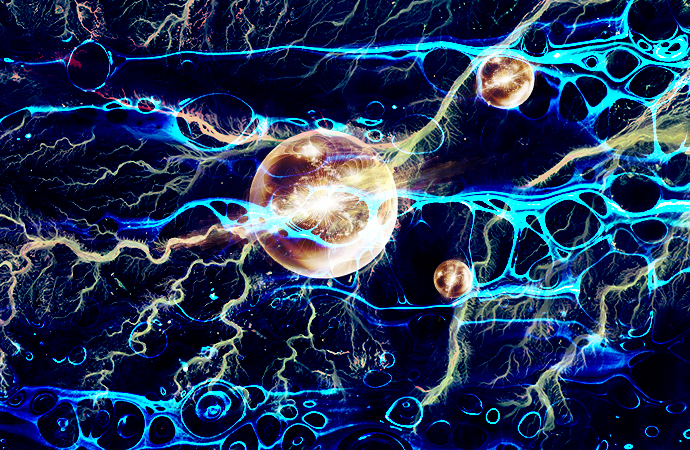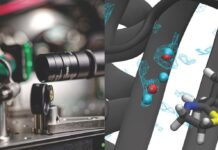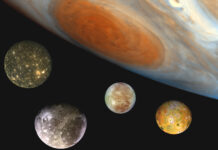A novel way of creating metallic water, and what it means to be a metal
When we hear the word “metal,” we generally conjure images in our minds of iron and steel in their respective, various forms.
However, you might also have heard that gas giants like Jupiter have layers of “metallic” hydrogen and helium buried deep within their gaseous envelopes under unimaginably extreme pressures and temperatures.
So…, what actually is a “metal”?
There seem to be three distinct definitions for “metal” depending on scientific discipline: In chemistry, elements that readily lose electrons are overwhelmingly classed as a metal of some kind (alkali, alkaline earth, rare earth, transition, and post-transition metals, and metalloids). In physics, a metal is any substance that conducts well due to its valence electrons’ readiness to flow from atom to atom of the substance relatively freely. Finally, in astronomy all elements heavier than helium are classed as a metal.
But, in reference to the topic of this article, we want the physics definition.
A recent publication by a team of researchers of the BESSY II lab in Germany details how they could make water droplets act like a metal but under relatively normal environmental conditions.
Normally, water becomes metallic in its properties under extreme pressure and temperature conditions; how was virtually the same result achieved under normal conditions, then?
The key turns out to be yet another seeming conundrum: It was achieved by adding the alkalis sodium and potassium to the water. Alkalis are infamous in chemistry for reacting violently—even explosively—with water, so how did the team pull this feat?
No magic required, by the way!
In short, they used water vapor and formed bubble-like droplets with that, which the sodium and potassium—extruded as nano-particulates—could cling safely to. However, what was unexpected from this experiment was that the valence electrons from the alkalis interacted with those from the water molecules in such a way as the water’s electrons started acting the same way. The result was that the droplets turned golden in hue, a sign the water had become metallic; apparently, water, when metallic, adopts a golden hue.
Just as with any new and accidental discovery in science, this one is still so new that no one yet knows exactly its ramifications. It could be just a novel curiosity with no real-life usage available or, like radio waves and zippers, end up becoming an essential part of some future tech: that point when it becomes a ubiquitous part of our society that requires the utilization of this process.
It’s still pretty cool, in my opinion, regardless!
References
Mason, P.E., Schewe, H.C., Buttersack, T. et al. (2021). Spectroscopic evidence for a gold-coloured metallic water solution. Nature 595, 673–676. https://doi.org/10.1038/s41586-021-03646-5
Recommended videos on this discovery
Here is the team lead’s video on the find as well (the lead, Philip Mason, is best known as the YouTuber “Thunderf00t”)
Anton Petrov’s video on the matter
Illuetration by Dana Dumea






[…] post Metallic Water…With the Help of Alkalis?! first appeared on United Academics […]